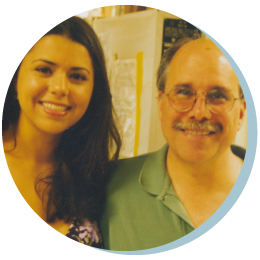 MCB Alumna Turned Faculty Member Gloria Brar Unravels the Mysteries of Meiosis
MCB Alumna Turned Faculty Member Gloria Brar Unravels the Mysteries of Meiosis
 |
| Brar in her lab as a faculty member |
Twelve years after earning her BA in MCB, Gloria Brar moved to the other side of the lecture hall as an assistant professor of cell and developmental biology. “After being here as an undergrad, I had always wanted to come back. It was such a special place in terms of the environment and the type of research that was being done — in particular, the focus on basic research,” Brar says.
Brar studies gene regulation during meiosis, the process that produces gametes. Her interest in research was sparked by her courses at Berkeley, particularly a molecular endocrinology course still taught by Gary Firestone. “The focus of the course was on problem-solving instead of memorizing information, and that's really what biology research is,” she says.
After doing an honors thesis in Firestone’s lab, Brar did her PhD at MIT. She became fascinated with what she calls the “choreographed dance of chromosomes” that occurs during meiosis as cells replicate their DNA and then divide twice to reduce their DNA by half, which involves dramatic, coordinated movements of chromosomes and other intracellular components. “There were a lot of things that you could see under the microscope that were happening to a meiotic cell that we didn’t really understand at all,” Brar says.
Brar thought that determining which genes were expressed during meiosis might help in defining the molecular control of the many poorly understood cellular changes that occur during meiosis. While the control and importance of some genes were well-defined in meiosis, she wanted to look broadly across the entire genome. In her postdoctoral fellowship at UCSF, she used a new technique — ribosome profiling (developed by MCB assistant professor Nicholas Ingolia) — to take a snapshot of all the genes being translated into proteins at many different time points during meiosis.
 |
| Brar as a student with her honors thesis advisor, MCB Professor Gary Firestone |
The result was a rich “atlas” of multiple levels of gene expression during meiosis — the first of its kind — that produced many unexpected findings. For example, Brar discovered that yeast cells briefly turn on almost all 6,000 of their genes during meiosis, revealing that it is a much more complex process than was previously clear. She also identified many short regions of DNA as genes that were previously overlooked and specifically expressed in meiosis.
In her lab at Berkeley, Brar is following up on the many interesting findings that emerged from her ribosome profiling study to better understand meiosis and the complex interplay between different levels of gene expression. She recently published a study that revealed how gene regulation is altered when cells are deficient in certain ribosomal proteins, which occurs in human ribosomal disorders. In another recent project, she examined how cells regulate the amount of different proteins that are members of complexes, so that precise ratios of the proteins are maintained. Brar says that answering these types of fundamental questions about how cells work is what drives her research program.
Like her MCB professors did for her, Brar shares her enthusiasm for research with her students. “Because I had such wonderful mentors when I was here, I take mentoring very seriously. I was lucky to have people who did that for me, so I try to pay it forward as much as possible.”
To learn more about Brar’s research, visit: http://www.brarlab.org
Back to Main Spring 2019 Newsletter Page
| Connect With Us! | ||||
MCB Twitter |
 MCB Facebook |

LinkedIn |
 Cal Alumni Network |
 Give to MCB |
